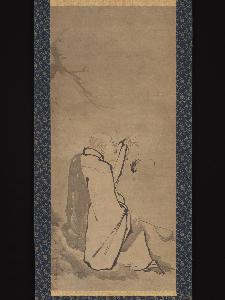Unkoku Togan
Unkoku Togan;Unkoku Tōgan
Place: Nagasaki
Born: 1547
Death: 1618
Biography:
Unkoku Togan, born in 1547, was a renowned Japanese painter known for his realistic landscapes. He was the second son of Hara Naoie, lord of Nokomi Castle in Hizen province, and was born into a privileged family in Nagasaki.
Early Life and Training
Unkoku Togan started as an artist of the Kanō school, which was a prominent art school in Japan at that time. However, his work soon took inspiration from the style of Sesshu, another famous Japanese painter. He painted realistic landscapes, usually using ink on paper.
Artistic Style and Works
Unkoku Togan's artistic style is characterized by his use of bold brushstrokes and vivid colors. His paintings often featured realistic landscapes, which were a departure from the traditional Japanese art styles of that time. Some of his notable works include Screen Depicting Landscape, People, Flowers and Birds, which is now housed at the Iwami Art Museum. Unkoku Togan's work was not only limited to painting. He also worked as a Buddhist priest and abbot of Unkoku-an Temple. His experience as a priest had a significant influence on his artistic style, which often featured themes of nature and spirituality.
Influences and Legacy
Unkoku Togan's work was influenced by the Kanō school, but he also drew inspiration from other artists such as Sesshu. His legacy can be seen in the works of other Japanese painters who followed in his footsteps. Some notable artists who were influenced by Unkoku Togan include Kano Sansetsu and Kanō Eitoku.
- Unkoku Togan's paintings can be found at the Museum Menard Art Museum, which is one of the most important cultural institutions in Japan.
- His work has been featured in several exhibitions, including a recent exhibition at the Menard Art Museum.
- Unkoku Togan's artistic style and legacy continue to be studied by art historians and scholars today.
works by Unkoku Togan can be found on https://Wikioo.org, which features a comprehensive collection of his paintings. More information about Unkoku Togan and his work can be found on https://Wikioo.org.





